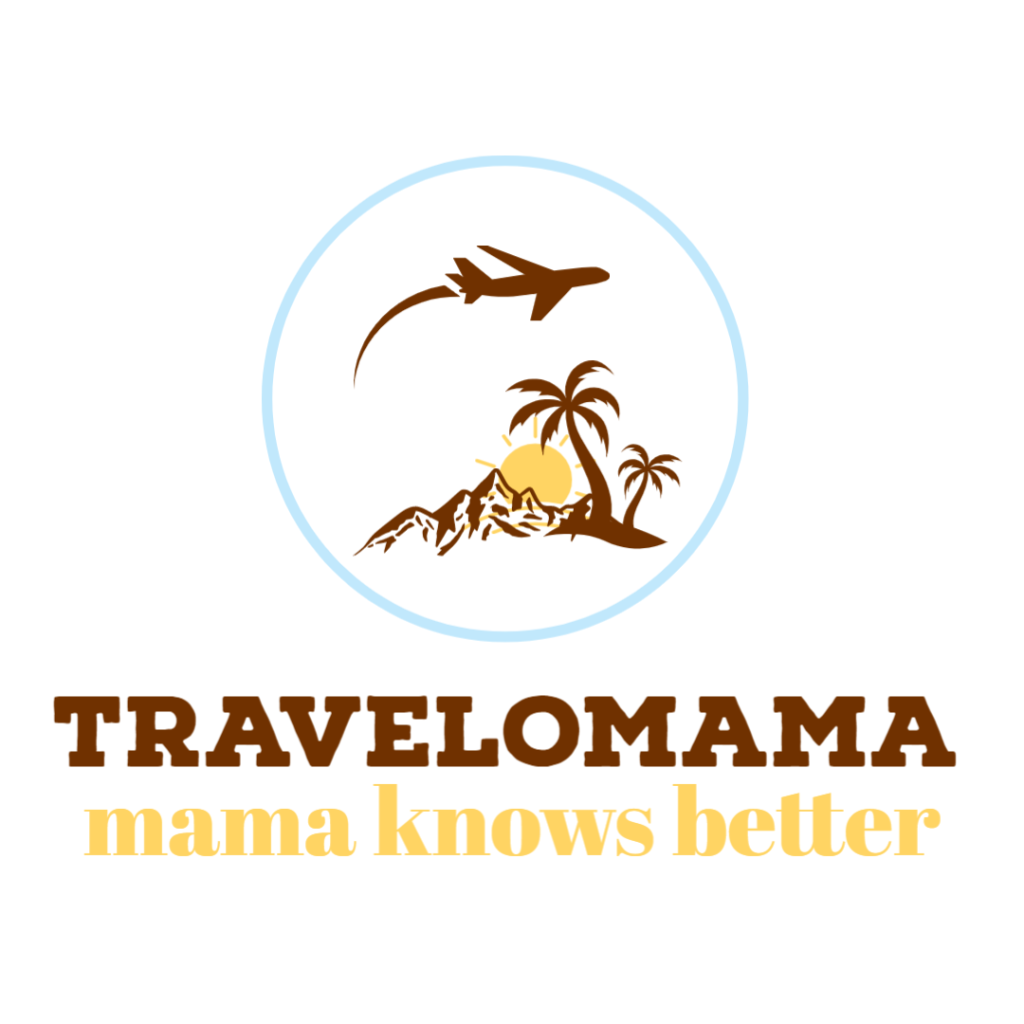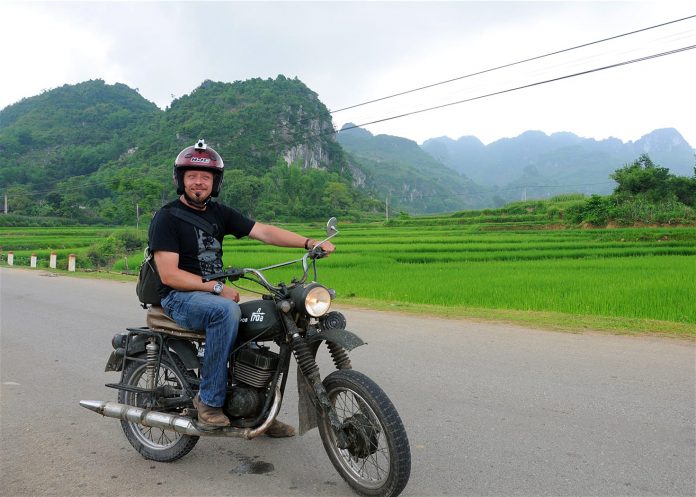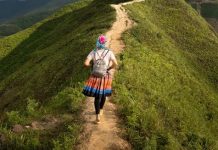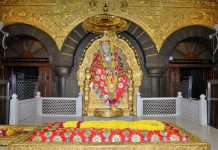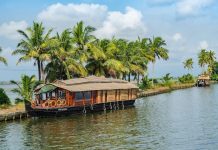If you’re looking for adventure but the Portugal you know is all olive groves, cork trees, windswept beaches and lively cities, it’s time to turn your attention northwards. You don’t need to go far, either: within 100km of Porto, you’re introduced to the highland way of life in a region that has a history, climate, landscape and traditions all of its own.
There are, of course, urban centres oozing culture: you’ve got Portugal’s third largest city and spiritual capital, Braga, and the Unesco-recognised old town of Guimarães, for starters. However, the real beauty of northern Portugal lies in the wilderness of its great outdoors. Here, the craggy, elevated countryside is a patchwork of fragrant pine forests, gorges, granite boulders and roaming livestock, all punctuated by streams and seasonal bursts of colour from abundant citrus trees. And for adventure lovers, there are boundless ways to get stuck in.
 Peneda-Gerês is Portugal’s only national park
Peneda-Gerês is Portugal’s only national park
Hike in Portugal’s only national park
Set your sat-nav for the country’s only national park, Parque Nacional da Peneda-Gerês, which straddles the northern border with Spain. This mountainous protected area, with verdant hillsides, sky-piercing peaks and granite outcrops, offers a glimpse of rural life in the extreme. For the dispersed communities largely living off the land here, traditions remain customary and the bustle of Braga, let alone the cosmopolitan streets of Porto, couldn’t feel further away.
Spread over roughly 700 sq km, it takes its name from two of its highest peaks, Serra da Peneda (1340m) and Serra do Gerês (1545m). Naturally, the best way to explore is on foot. You’ll find tempting waterfalls, Roman ruins and viewpoints promising sunsets to die for as you traverse the trails that criss-cross the park.
There are waymarked routes of varying length and difficulty, and lucky wildlife spotters could see anything from eagles and wild horses to boar, wolves and, who knows, even the legendary, whispered-of brown bear.
 The ‘Fantasticable’ zip line at Pena Aventura
The ‘Fantasticable’ zip line at Pena Aventura
Fly along one of Europe’s longest zip lines
Fancy flying between two hillsides along one of Europe’s longest zip lines? You can do just that and so much more at the pine-clad park of Pena Aventura, 110km northeast of Porto in the rural heartland of this region. Opened in 2007, it’s clearly enjoyed substantial investment, with care taken to create a well-maintained outdoor playground for all ages – and the ‘Fantasticable’ zip line is the star of the activity-filled show.
Once harnessed and helmeted, you’re driven up to the starting point on the opposite hill. Lying down, head-first in a sort of sling, you’re soon soaring at speed. It’s a thrilling ride that can quite literally take your breath away as the bristly treetops come to an abrupt halt and the ground falls away beneath you, leaving you to fly for roughly 1.5km at a heady 150m above the ground below.
 Steeply terraced vineyards rising from the banks of the River Douro
Steeply terraced vineyards rising from the banks of the River Douro
Take your pick of the natural parks
While there may only be one national park, there are many more natural or nature parks, with a handful of them located in northern Portugal.
Starting in the northwest, you’ve got the Atlantic-facing Parque Natural do Litoral Norte with its weather-beaten sand dunes and hardy grasses. Heading east, there’s Parque Natural do Alvão, famed for its dramatic array of waterfalls; while the large Parque Natural de Montesinho is more like the national park, with lush landscapes, granite formations and isolated communities.
Further east still, the 120km-long sliver of Parque Natural do Douro Internacional hosts a remarkable rugged canyon that funnels the River Douro in a line, which also happens to mark the border with Portugal’s Iberian sibling Spain.
 Tackling the Pontes Suspensas at DiverLanhoso
Tackling the Pontes Suspensas at DiverLanhoso
Tackle a hillside assault course
Head northeast of Porto for the adventure park of DiverLanhoso, an outdoor jungle gym for all ages constructed with an eye sympathetic to its surroundings. As well as a 350m-long zip ‘slide’, rock climbing and canyoning, eager adventure hunters can don a harness and give the ‘Pontes Suspensas’ course a go. This series of 38 suspended bridges will test your balance as well as your resolve.
Unlike similar courses where you’re high in the treetops, this one has you navigating steel cables and wooden slats that hug the rocky hillside. Expect to clamber over boulders, crawl through barrel tunnels and be impressed by the views of the valley below from rock-top vantage points. Top tip: take a pair of sports gloves as it can be hard going on your hands.
Sample local Alvarinho wines
Adventuring is thirsty work. Luckily, this region is renowned for its crisp Alvarinho wine, a type of vinho verde (literally ‘green’ or young wine) best sipped chilled under a bright blue sky. The Portuguese are understandably proud of this distinctive and typically light wine produced exclusively in the north (and in Galicia, Spain).
The town of Monção, on the border with Spain in northwest Portugal, sees itself as the hub of Alvarinho viticulture; as such, it’s where you’ll find the Museu Alvarinho, housed in a brilliantly whitewashed stone building in the main square. Exhibits are in Portuguese, but there are interesting photographs, artefacts and sniff-tests to help set the scene before a tasting session in the atmospheric stone cellar.
If you’re visiting in summer, check dates for the Feria do Alvarinho (Alvarinho Fair), a three-day excuse to sample as much of the good stuff as possible while eating paired delicacies and tapping those toes to traditional folk music.
 Fireworks at the Sexta13 festival
Fireworks at the Sexta13 festival
Brave a ‘Friday the 13th’ festival
Friday the 13th is anything but unlucky for hilltop Montalegre in the very far north of Portugal. On the contrary, it signals the start of what will be a raucous and wonderfully weird weekend of fun and freaky frolics during its Sexta13 festival.
In short, this celebration embraces the occult and witchcraft to challenge superstitious goings-on. The town’s 13th-century fortress is the backdrop to vivid performances with model dragons, costumed actors swooping in on wires and an epic fireworks display. Curiously, this procession of demons and witches is led by a quirky local priest, Father Fontes, now in his eighties. There’s a distinct Nightmare Before Christmas feel to things, with Alvarinho contributing to the revelry.
Sexta13 takes place every Friday the 13th, which occurs between one and three times per year. Come dressed to impress or just pull up a pew and observe the spectacle, but whatever you do, arrive early. Sexta13 sees Montalegre swell to around 60,000 people, six times the population of the surrounding municipality.
 The Hotel Convento dos Capuchos is housed in a former nunnery
The Hotel Convento dos Capuchos is housed in a former nunnery
The chance to stay local
Exploring this remote region gives you the chance to stay in small, often family-run accommodation. Look out for properties that are part of the Hotéis Rurais de Portugal, an association that promotes a collection of largely independent countryside residences.
In Monção, for example, there’s the former nunnery of Hotel Convento dos Capuchos. Run by a brother-and-sister team, there’s a petite swimming pool, tennis courts, and it even has its own back door to the town’s 14th-century ramparts.
If you’re heading to the national park, relaxed Hotel Misarela is a brilliant place to stay, thanks in part to its pet-friendly modern rooms with hammock-decked balconies, but also to its exceptional restaurant. Its good food is a necessity after a long hike!
Meanwhile, Casas Novas in the quiet northeastern village of Redondelo is the ideal place to hit pause for a night or two. The historic manor house is of particular interest here, with some rooms containing original 18th-century stone features. The fresh breakfast is also first-rate, and the swimming pool an added bonus.
How I found peace in Bali after a lifetime of solo travel
In the last thirty years Rosita Boland has visited some of the most remote parts of the globe, carrying little more than a battered rucksack and a diary. She kept a written record of her thoughts and has now published a book, documenting nine journeys from nine different moments in her life. ‘Elsewhere’ shows how exploring the world and those she met along the way dramatically shaped the course of her life. From death-defying bus journeys through Pakistan to witnessing the majestic icescapes of Antarctica and putting herself back together in Bali, Rosita experiences moments of profound joy and endures deep personal loss.
On New Year’s Day, 2016, a minibus from the port of Padangbai dropped me at the Coco Supermarket at the south end of the gloriously named Monkey Forest Road, in Ubud, Bali. I started walking, rucksack on my back, sweating profusely. It was late afternoon and the humidity was higher than any I’d ever experienced. I was in search of a guesthouse called Narasoma, at the far end of the road.
The pavements were the usual mosaic of broken tiles, open sewers and uneven paving stones, some of which had already split neatly in half. That was when I was able to walk on the pavement. Long stretches were occupied by parked motorbikes, or ‘motos’, as everyone called them.
Their drivers sat alongside, chanting what I soon came to know was the Ubud mantra: ‘Taxi? Taxi? You want taxi?’ Some drivers who were fed up saying ‘taxi’ a thousand times a day simply held up laminated signs instead, which proclaimed in capital letters, ‘TAXI’. The noise of the traffic, and the motos and the tourist buses that poured into Ubud every day, was almost physical, it occupied such a large space in the narrow street.
January is usually the start of the wet season in Bali. It was late this year and the humidity and heat were exceptional. My little rucksack was not heavy, at just under 10 kilos, but in that solid heat, it felt like a sack of bricks.
I had come that morning from the Gili Islands that lie east of Bali. The boat from Gili Meno had stopped at Gili Trawangan for an hour, and I had used the time to search for a guesthouse in inland Ubud, where I had never been before. I googled ‘Ubud’, ‘guesthouse’ and ‘pool’. One of the many places that had come up was a guesthouse called Narasoma. I tried to find an image of its pool, but then realised it was almost time for the ferry to depart.
The entrance to Narasoma was at the far end of the Monkey Forest Road, opposite a football field, its surface pitted and rough; this didn’t deter the children gleefully playing there. There were signs for it and other guesthouses at the start of Beji Lane; a pedestrian lane it shared with motos, but nothing bigger.
I stepped into the little open-air reception area, with its beautiful carved wooden arches.
“You have a reservation?” Desak, the woman behind the desk, asked me.
“No.”
She consulted a ledger. “We have a room,” she declared. “I will show it to you. How long will you stay?”
“Three days?” I offered.
She took a key and indicated that I was to follow.
“Excuse me,” I said. “Could I see the pool first?”
 Rosita had no desire to get back on the road after staying in Ubud
Rosita had no desire to get back on the road after staying in Ubud
We walked through a large jungly courtyard and along a twisting path that ran between two high walls. Suddenly, the space opened out. I was looking down into a vast hollow, an immense green space, where coconut trees rose high into the sky like the masts of verdant ships. There was a bridge, and a river running through the space. There were banana trees, frangipani trees with lemon-coloured blossoms, and a tree I later discovered was a very old durian.
In the middle of all this impossibly tumbling lush greenness was an empty infinity pool, fringed with pink hibiscus at one end. From above, I could see the steps that led into the blue water. It was the kind of pool you usually only see in a five-star hotel, but this was not even a hotel, it was a guesthouse, where my room cost the equivalent of €25 (US$28) a night. It was a perfect pool in a perfect environment; a pool that I had been longing to swim in all my life. I stared down at it, and my heart lurched with joy.
I did not document my travels via any social media when on the road, but every now and then I wrote a long group email to family and friends. The one I sent some time after arriving in Ubud was headed, ‘My Bali Coma in Narasoma, aka Paradise’. It was only half a joke, after my three days were up, I had gone back to Desak at reception, booked in for a further six weeks and set about extending my Indonesian visa. For once, I didn’t want to go anywhere else. The road was not calling me ever onwards. I had found what for me felt like the perfect place.
So many people had told me Bali had long since been ruined, and that Ubud was a rubbish-strewn noisy traffic hell hole that had once been lovely, but was now also ruined. It was true that if you came only for a day trip, as many tourists did, your impression would be almost wholly of the traffic nightmare of Monkey Forest Road, and over-eager hawkers in the markets, but Ubud was different when you were staying there.
The experts’ advice on how to lead an adventurous life
Where can travellers find – and, more importantly, how can they cultivate – a true spirit of adventure? Who better to answer these questions than those who have spent a lifetime pursuing it.
We asked the stellar line-up of speakers appearing at the Cheltenham Literature Festival in the UK to reflect on their favourite destinations, most extraordinary experiences and top tips for leading adventurous lives.
And for even more ways to get the adrenaline cascading through your veins, check out Lonely Planet’s Atlas of Adventure, the ultimate encyclopedia for thrill-seekers.
 Phoebe Smith looking down on the clouds from the slopes of Ben Nevis, Scotland, the highest mountain in the British Isles
Phoebe Smith looking down on the clouds from the slopes of Ben Nevis, Scotland, the highest mountain in the British Isles
Phoebe Smith – wild camper extraordinaire
Award-winning editor and travel writer Phoebe Smith is author of eight books on the wilderness and wild camping, including Extreme Sleeps: Adventures of a Wild Camper, Wilderness Weekends: Wild Adventures in Britain’s Rugged Corners and her latest book, Britain’s Best Small Hills.
Favourite destination for adventure
It has to be the UK. Why? Because adventure doesn’t mean travelling hundreds and thousands of miles. You can find it on your own doorstep – and the UK is mine. From searching out the old Scottish mountain huts (known as bothies) in the highlands, to climbing our own collection of ‘mini Matterhorns’, teetering on the edges of sea cliffs and wild camping in the woods – we really are spoilt for the diverse range of scenery and adventures right here.
Most adventurous travel experience
Probably my most recent mini-expedition. I went to Greenland to walk the Arctic Circle Trail by myself, unsupported from Kangerlussuaq to Sisimiut. It’s a true wilderness and in the eight days it took me to do it I saw far more reindeer than people, got to glimpse a smear of the Northern Lights, battled storms and river crossings and found the perfect beach to camp on and stand, hundreds of miles from any houses or roads, in awe of the complete silence.
Tip for leading an adventurous life
Adventures can be as big or as small as you want them to be. I have a busy full-time job and yet I still fit them in to evenings and weekends. The key is to always be prepared. I keep what I call my ‘go-bag’ packed and ready for an overnight camp at all times. That means when I get the weather window I want or just need to escape the city, I have no excuses, I simply pick up my bag and get out there. I urge you all to pack yours too.
 Chris Bonington on one of the countless perilous climbs that have defined his extraordinary career
Chris Bonington on one of the countless perilous climbs that have defined his extraordinary career
Chris Bonington – legendary mountaineer
Chris Bonington – mountaineer, writer, photographer and lecturer – started climbing at the age of 16 in 1951. It has been his passion ever since. He made the first British ascent of the North Wall of the Eiger, led the first ascent of the South Face of Annapurna and lead the successful first ascent of the Southwest Face of Everest in 1975. He has written many books on his adventures including Ascent: A Life Spent Climbing on the Edge.
Favourite destination for adventure
My favourite place for adventure is Nepal because it’s so beautiful and there really is something for everyone – from gentle tourists to the most adventurous mountaineers. The people too are lovely – the Sherpas, the Nepalese – it’s a great part of the world.
Most adventurous travel experience
My most adventurous experience was in 1996 but began in 1982 when, whilst flying from Chengdu to climb Everest, we flew over an immense mountain range – the Nyainqentanglha Mountains. The range stretched to the far horizon but one peak stood higher than any other and I was determined to find it. After a failed attempt in 1989 when the Tiananmen Square protest prevented our entering Tibet, we set off again in 1996 with nothing more than a single photo of this mysterious unknown mountain and a Tibetan guide who had never heard of it. It was while staying in a guesthouse in a magical little town that a woman recognised the photograph and directed us on the final four-day trek across undrivable terrain to the mountain, Sepu Kangri, above a sacred lake. It was the sense of discovery that made it such an adventure.
Tip for leading an adventurous life
Be clear about what you can achieve – for a truly adventurous life, freelance around your travels. If you do have a full-time job, be sure to plan and research carefully to achieve the most in the time you have.
 Charley Boorman riding his trusty steed through Vietnam, one of dozens of countries he has explored by motorbike
Charley Boorman riding his trusty steed through Vietnam, one of dozens of countries he has explored by motorbike
Charley Boorman – motorcycle-mad adventurer
Charley is best known for his TV motorcycling adventures with Ewan McGregor, Long Way Round, from London to New York via Europe and Asia, and Long Way Down, from Scotland to Cape Town. Other shows following his epic two-wheeled journeys include By Any Means, Right to the Edge and Extreme Frontiers.
Favourite destination for adventure
One of the most incredible places Ewan and I went to for our adventure Long Way Round was Mongolia. It’s still very rural and underdeveloped, so there wasn’t much tarmac, which made the riding more of a challenge.
Most adventurous travel experience
The Dakar Rally is probably one of the most dangerous off-road races in the world. I went in 2006 when it was still in Africa, a 16-day race across the Sahara Desert. It has since been held in South America for security reasons and for the first time ever a British guy called Sam Sunderland has just won it.
Tip for leading an adventurous life
One of the biggest tips I was told about travelling was to have patience as things don’t always go your way when you’re on the road. I learnt that you’ve got to be willing to adapt and not be too rigid as life can turn on a sixpence.
 Antonia Bolingbroke-Kent enjoying the hospitality of the locals in Arunachal Pradesh, Northeast India
Antonia Bolingbroke-Kent enjoying the hospitality of the locals in Arunachal Pradesh, Northeast India
Antonia Bolingbroke-Kent – travel writer
Antonia Bolingbroke-Kent is a travel writer. Her latest book, Land of the Dawn-Lit Mountains: A Journey Across Arunachal Pradesh – India’s Forgotten Frontier, tells of her three-month journey across this wild, mountainous state.
Favourite destination for adventure
My favourite destination for adventure has to be the wild, mountainous and little-explored state of Arunachal Pradesh in Northeast India. Few other places are blessed with the same intoxicating mix of proper mountains, dense forests, exotic flora and fauna and array of tribal cultures.
Most adventurous travel experience
In March last year, I trekked through an extremely remote valley on the Indo-Tibetan border in search of a mystical Buddhist land called Pemako. For two weeks, myself and my guide – a whimsical Khampa llama called Dorje – walked through deep forests and wild valleys, spending each night with Tibetan families in tiny villages. I felt like I’d been teleported to the 19th century.
Tip for leading an adventurous life
To stop making excuses and just GO! It’s so easy to find reasons not to travel and have adventures but ultimately, if you genuinely want to get out there and explore the world, there’s nothing to stop you making it happen.
 Sarah Outen battles the elements while kayaking the ultra-remote Aleutian Islands, which divide the Bering Sea from the Pacific Ocean
Sarah Outen battles the elements while kayaking the ultra-remote Aleutian Islands, which divide the Bering Sea from the Pacific Ocean
Sarah Outen – waterborne daredevil
Adventurer by land and sea, Sarah’s journeys have taken her all over the world on long and remote expeditions, including London2London: Via the World – a journey that saw her row, cycle and kayak from London all the way around the northern hemisphere and back to London. Her latest book Dare to Do was shortlisted for the Edward Stanford Travel Book of the Year.
Favourite destination for adventure
I love the ocean so either somewhere on the coast or way out to sea. Alaska is my top choice for its wilderness, massiveness and beauty – it’s raw.
Most adventurous travel experience
Kayaking through the Aleutian Islands and Alaskan peninsula in 2014, I was taking a wash in a stream one day when I looked up and saw a brown bear walking towards me. Instead of staying calm, I screamed and ran out of the stream, tripping as I did so. The bear took this as cue for a game and chased me – thankfully, he was young and only curious and we managed to scare him off with lots of shouting and rocks.
Tip for leading an adventurous life
Get outside as much as you can, open your eyes and ears to everything that is around you, and spend as much time travelling in a human-powered way as possible. You see things from a totally different perspective this way.
 Alastair Sawday has explored the world in a never-ending quest for authentic travel experiences © Alastair Sawday
Alastair Sawday has explored the world in a never-ending quest for authentic travel experiences © Alastair Sawday
Alastair Sawday – travel industry maverick
Alastair was born in a shack 9000ft up in the mountains of Kashmir in India, so perhaps he was always destined to become a travel industry maverick and entrepreneur, the brains behind Sawday’s, an award-winning travel company that seeks out exceptional places to stay.
Favourite destination for adventure
The Parque Natural de Grazalema – wild Spain, ever-changing and hauntingly beautiful. There are walks for every agility level, from the Salto del Cabro, where goats have to leap, to the high open grassland fringed with memories of old houses. Even the few white-washed villages are exquisite.
Most adventurous travel experience
That would be travelling from Guyana to Venezuela by a canoe with an outboard engine and an over-heavy cargo – that was a novel way of getting from one country to another. Venezuela had, as a matter of routine, declared war on Guyana and slung chains across the rivers, under which we would duck. But the wide, easy, estuary of the Orinoco, which we had to cross, became a perilous mountain range of salt-water as the wind gathered pace and threatened us with catastrophe. The frantic prayers of the boat’s owner and wife were, happily, less effective than the bailing the rest of us took to – with no more than shoes and cupped hands, for we had thrown the bailer overboard in an earlier incident.
Tip for leading an adventurous life
Say ‘yes’ to the invitation to an adventure, and pretend you are younger than you are.
